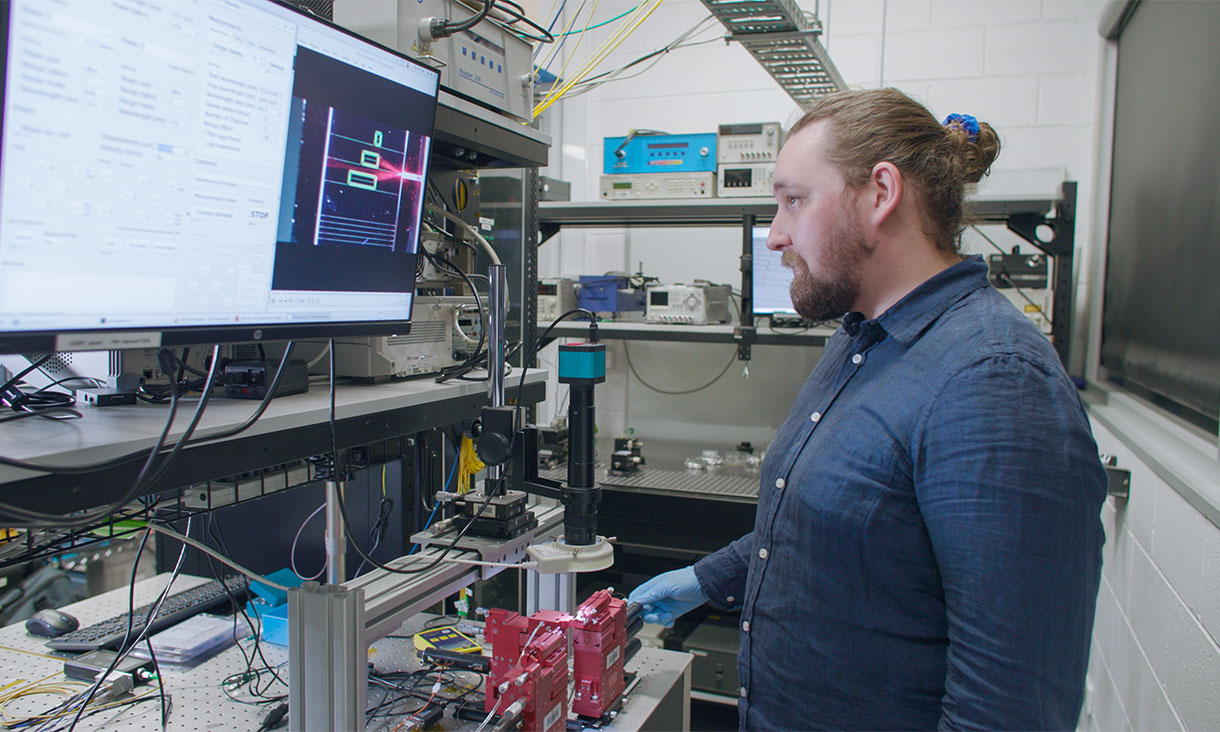
On-board sensors, like electrical resistance strain gauges, help us to safely manage our aircraft’s structural risks. Fatigue cracking – when materials wear-and-tear over time – is one such structural risk.
However, current electronic strain sensing technology requires extensive electrical cabling which can be susceptible to electrical interference. It is also obtrusive, which limits the number of strain measurement points that can be practically monitored.
Optical fibre strain sensors – which are lighter, smaller, and more sensitive – provide a potentially more pervasive monitoring solution for aircraft.
However, one thing currently holding this technology back is the unwieldy size of optical fibre interrogation systems which consist of complex, bulky optical components – such as lasers, detectors, and modulators – all connected to one another to enable measurements of light in the fibre to be translated to measurements of strain on the fibre.
To miniaturise these current interrogation systems, the Sir Lawrence Wackett Defence and Aerospace Centre and our team at the Integrated Photonics and Applications Centre, with support from the Defence Science and Technology group, developed a concept demonstrator to show the feasibility of integrating all the necessary bulky components onto a fingernail-sized light-filled chip.
The team did this by using integrated photonics, a technique that allowed them to replicate the complex processes of a bulky laser, modulator, and detector in a much smaller area. The team will use the current bulk optical system and begin replacing each discrete component one at a time, starting with miniaturising the modulator onto a fingernail-sized integrated photonics chip.

Proof-of-concept testing has demonstrated the ability to measure static and dynamic strains, including high frequency acoustic emissions in an aerospace structural material.
Once miniaturised, this new interrogator could provide a basis for in-flight sensing of both temperature and strain at spatial densities not previously possible.
In allowing for a more comprehensive understanding of material and structural performance, this technology could potentially accelerate the design, development and testing of new civil and military platforms, including under operational extremes.
The team at the Integrated Photonics and Applications Centre has been a pleasure to work with.
- Nik Rajic, Defence Science and Technology Group (DSTG)
Read more about this research published at the 20th Australian International Aerospace Congress.
This project was made possible thanks to funding from Defence Science and Technology Group (DSTG) and the Office of Naval Research Global.


RMIT University acknowledges the people of the Woi wurrung and Boon wurrung language groups of the eastern Kulin Nation on whose unceded lands we conduct the business of the University. RMIT University respectfully acknowledges their Ancestors and Elders, past and present. RMIT also acknowledges the Traditional Custodians and their Ancestors of the lands and waters across Australia where we conduct our business - Artwork 'Sentient' by Hollie Johnson, Gunaikurnai and Monero Ngarigo.
Learn more about our commitment to Indigenous cultures